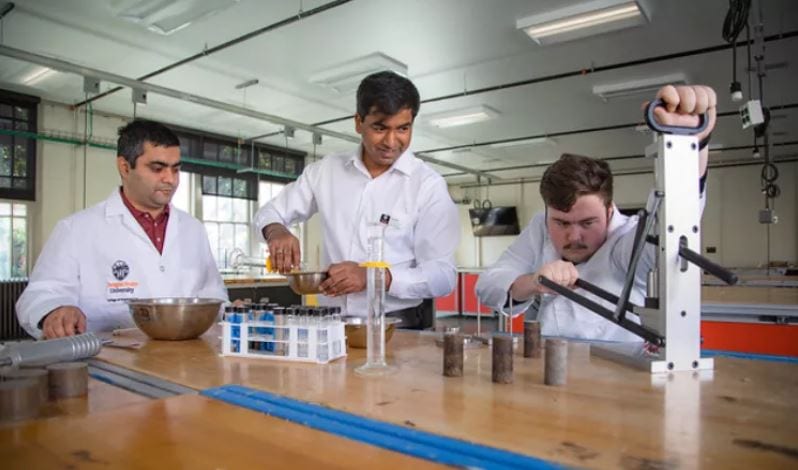
Oregon State University and Sandia National Laboratory have received a three-year, $540,000 grant from the U.S. Department of Energy to explore capturing carbon dioxide from industrial emissions and sequestering it in a mineralized form in 3D-printed building materials.
Pavan Akula, assistant professor of civil engineering in the OSU College of Engineering, will team up on the project with researchers from Sandia, the Indian Institute of Science and the Indian Institute of Technology Roorkee and two industry partners, Graymont and Verdant Building Alternatives.
The researchers’ goal is to take a sector of the economy that’s a big emitter of carbon dioxide and make it significantly greener, Akula said.
“The construction industry is responsible for generating 13% of global CO2 emissions,” he said. “In recent years, 3D-printing technology for concrete has been gaining popularity in building construction as it is a more sustainable alternative – it reduces both waste and transport costs. However, most 3D printing of concrete still relies only on traditional materials that are really carbon intensive.”
Portland cement, developed in England in the early 1800s, is the most common type of binder used in concrete. It is usually produced by mining, grinding, and heating clay and limestone in industrial kilns to temperatures as high as 2,820 degrees Fahrenheit. The process alters the materials’ chemistry and creates “clinker,” cement’s main component, and also generates carbon dioxide.
“We plan to capture CO2 emitted from the lime and cement industries and develop sustainable binders capable of storing and mineralizing the captured CO2 in printed building components such as walls,” Akula said. “Our project aims to develop technologies and materials that can significantly reduce the carbon footprint of materials used in 3D printing.”
That’s especially important, he added, as demand for concrete is expected to keep rising as trends toward urbanization continue globally.
“Shrinking the carbon footprint of cement-based construction materials is imperative if we’re to hit decarbonization and climate targets set by the Paris Agreement,” Akula said.
Subscribe to AM Chronicle Newsletter to stay connected: https://bit.ly/3fBZ1mP
Follow us on LinkedIn: https://bit.ly/3IjhrFq
Visit for more interesting content on additive manufacturing: https://amchronicle.com
Researchers have developed a way to consistently produce a special type of stainless steel known…
APF designed to enable superalloy development in direct energy deposition. Nikon has announced the release of…
Schoeller-Bleckmann Oilfield Technology GmbH (SBOT), based in Ternitz, Austria, has completed the first expansion stage…
The companies will work together to develop new standards for the energy industry using cold…
Fortius Metals, a company located in Colorado and specializing in supplying metal wires for additive…
ADNOC Gas has developed one of the energy industry’s largest digital libraries of critical components,…
This website uses cookies.